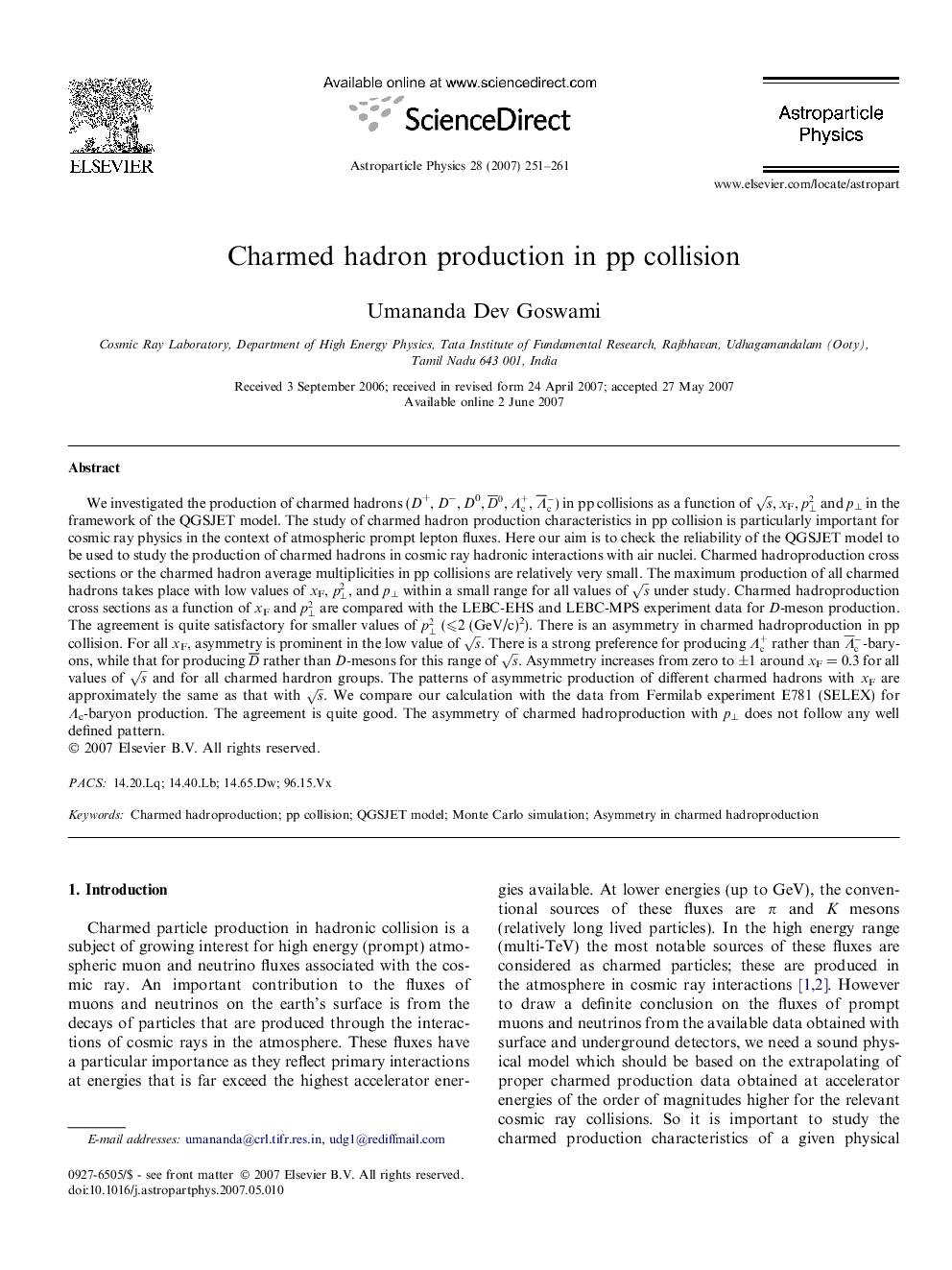| Article ID | Journal | Published Year | Pages | File Type |
|---|---|---|---|---|
| 1771459 | Astroparticle Physics | 2007 | 11 Pages |
Abstract
We investigated the production of charmed hadrons (D+, Dâ, D0, D¯0, Îc+, ίc-) in pp collisions as a function of s, xF, pâ¥2 and p⥠in the framework of the QGSJET model. The study of charmed hadron production characteristics in pp collision is particularly important for cosmic ray physics in the context of atmospheric prompt lepton fluxes. Here our aim is to check the reliability of the QGSJET model to be used to study the production of charmed hadrons in cosmic ray hadronic interactions with air nuclei. Charmed hadroproduction cross sections or the charmed hadron average multiplicities in pp collisions are relatively very small. The maximum production of all charmed hadrons takes place with low values of xF, pâ¥2, and p⥠within a small range for all values of s under study. Charmed hadroproduction cross sections as a function of xF and pâ¥2 are compared with the LEBC-EHS and LEBC-MPS experiment data for D-meson production. The agreement is quite satisfactory for smaller values of pâ¥2 (⩽2 (GeV/c)2). There is an asymmetry in charmed hadroproduction in pp collision. For all xF, asymmetry is prominent in the low value of s. There is a strong preference for producing Îc+ rather than ίc--baryons, while that for producing D¯ rather than D-mesons for this range of s. Asymmetry increases from zero to ±1 around xF = 0.3 for all values of s and for all charmed hardron groups. The patterns of asymmetric production of different charmed hadrons with xF are approximately the same as that with s. We compare our calculation with the data from Fermilab experiment E781 (SELEX) for Îc-baryon production. The agreement is quite good. The asymmetry of charmed hadroproduction with p⥠does not follow any well defined pattern.
Related Topics
Physical Sciences and Engineering
Physics and Astronomy
Astronomy and Astrophysics
Authors
Umananda Dev Goswami,
